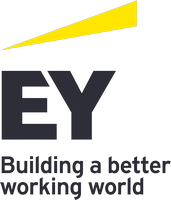EY refers to the global organization, and may refer to one or more, of the member firms of Ernst & Young Global Limited, each of which is a separate legal entity. Ernst & Young Global Limited, a UK company limited by guarantee, does not provide services to clients.
How EY can help
-
Our Government & Public Sector practice provides a full range of consulting, strategy, tax and audit services.
Read more
Now, despite infusions of federal funds and COVID-19 restrictions lifting across the country, gaps in vital services remain, and state agencies are still struggling to get funds to the places where it will help their citizens the most. Government officials I speak with are asking themselves “How do we make sure inequities are addressed and families are truly stable, and then help them thrive?”
Four questions for state agencies to develop a sustainable strategy
This requires honest introspection and a willingness to change — which can seem daunting in government, where bureaucratic inertia is sometimes the only constant. But I’d argue we have a door of opportunity that is wide open right now. If we can find a way to step through it, we can capitalize on the innovation and speed engendered by the pandemic to make real, lasting change for the residents we serve and our state employees.
State agencies need to consider four fundamental questions to develop an effective and sustainable strategy:
1. How do we put the right internal structure in place for change and sustainability?
Our world has turned upside down in the last 18 months. While agencies have proven that some functions can be done differently (e.g., remote work, video conferencing check-ins) others require a return to the office and work in the communities. However, agencies are struggling to keep people in jobs, particularly those working in difficult circumstances, such as child protective services. Without a supported, dedicated workforce, states can’t provide services to their residents, so how do they attract, engage and retain the right people?
2. How do we use data to better serve residents?
There’s no shortage of data available, but as I discussed in How states can use meaningful data to enhance childcare, it’s not the amount of data, it’s how you use it. Implementing real-time data with specialized overlays and predictive analytics can give states insights into pressing needs today and emerging needs in the future. For instance, focus on the places where childcare funding can do the most good and create long-term stability. Data can also be shared across agencies to give families in need better wrap-around services. But how do states find and implement new systems while preserving the privacy of their residents?
3. How do we put people at the center when we design policies, programs and practices?
Customer and user experience have grown increasingly important, sophisticated and expected in most areas of our lives. They influence everything from the flow of people through a hospital waiting room to the customer journey to purchase clothing from an online retailer. The aim is making the experience of using a service, completing a task or purchasing a product as easy and frustration-free as possible.
Often, government policies, programs and practices are created on whiteboards without the input of residents or front-line employees, which results in a frustrating and difficult experiences for both residents and workers. Red tape, confusing directions, pages and pages of (often redundant) paperwork and outdated systems make accessing information difficult, if not impossible, especially for poor residents.
States can use the principles of user experience to engage with users at all levels, including front-line employees, so they can understand their user journey from beginning to end and identify where the pain and pressure points lie. This would mean more residents accessing help. And for employees, this creates a more efficient and effective experience that allows them to be more productive and spend more meaningful time with families in need, and less time wrestling with paperwork and systems. Ultimately, how does the government meet the needs of residents?
From my own experience, the department I led is one designed to help people return to the workforce. But because the system wasn’t designed with users in mind, we required job seekers to come into the office during peak hours, where they would wait an average of 2.5 hours. Through digging deep into the customer journey, we implemented new technology and new process flows and were able to reduce the wait time to an average of 5 minutes.
4. How do we leverage community partnerships to help families?
It’s well-understood that state government can’t be the sole provider to families in need. Community groups and nonprofits are often a vital part of the services families can access. However, federal reporting requirements are so incredibly complex that small, hyper-local groups and individuals who want to help are often unable to participate in assistance programs.
State agencies need to find ways to shield these small groups from government complexities so they can focus on helping people. That can mean a number of things, including having larger organizations mentor smaller ones, again using customer journey mapping to understand and overcome pain points, and instituting uniform policies that make sense and apply to all organizations, regardless of size or capacity.
While these challenges may seem daunting, they are all manageable once a course is set and charted. By far the biggest hurdle for state agencies is the whirlwind of day-to-day life — taking the time and space to plan proactively and strategically and then implement those plans. The long-term benefits to residents, families, employees and the agency itself will more than make up for the time spent.





